
Fiona Brockhoff has spent a lifetime designing gardens that celebrate connection, beauty and generosity.
Words Georgina Reid
Photography Daniel Shipp
SOMEONE once told me, years ago, that a front garden should always be a gift to the street; that the backyard can be about privacy and enclosure but the front should be an act of generosity. The metaphor of a garden as a gift has followed me for years. First as a landscape designer in Sydney, and more recently as a writer obsessed with gardens and why we make them, what they mean, and how they sustain us.
There are many ways of defining a garden, but the most common adjectives relate to enclosure. A garden is a space separated from the world. By a fence, a hedge, a windbreak, a pathway. A space with boundaries as much physical as psychological.
We all want to feel safe, protected and enclosed in our homes and, by extension, our gardens. It is, perhaps, because of this sense of privacy that our gardens are places where we can truly be ourselves. Places where we can potter and play and dream. In this sense, a garden is a gift to the gardener. And vice versa. But the metaphor doesn’t stop there, because having a garden is a privilege and privilege, like a garden, is best when it is shared.
Landscape designer Fiona Brockhoff makes the kind of gardens that make good neighbours. She’s been doing so for over 30 years, treading a path that has seen her recognised as one of the defining figures in Australian garden design. Generosity and connection are threads that weave through her work, whether it’s a courtyard garden in Toorak, Victoria, a windswept sand dune on the Mornington Peninsula, or a rambling farm garden in Albury, New South Wales.
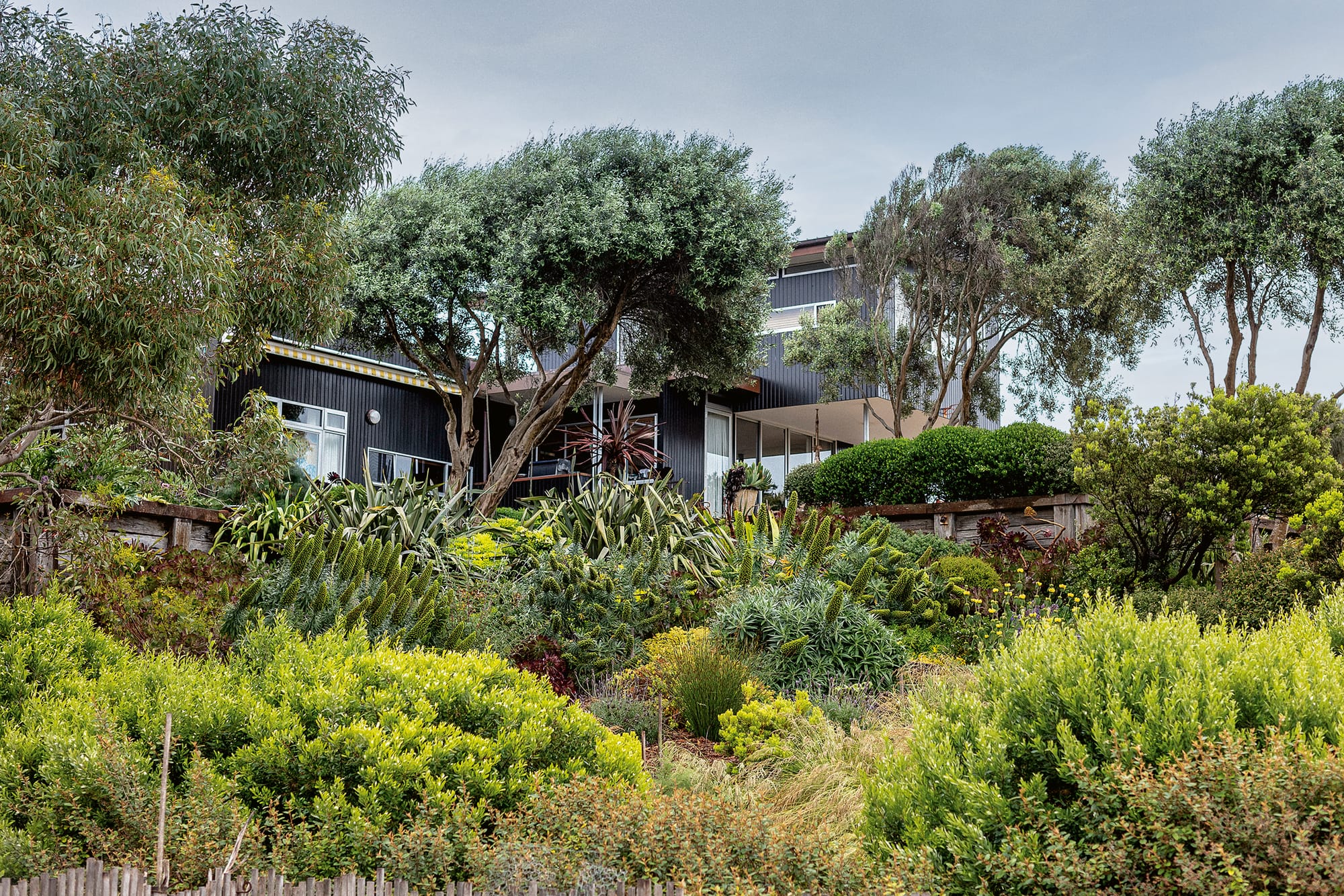
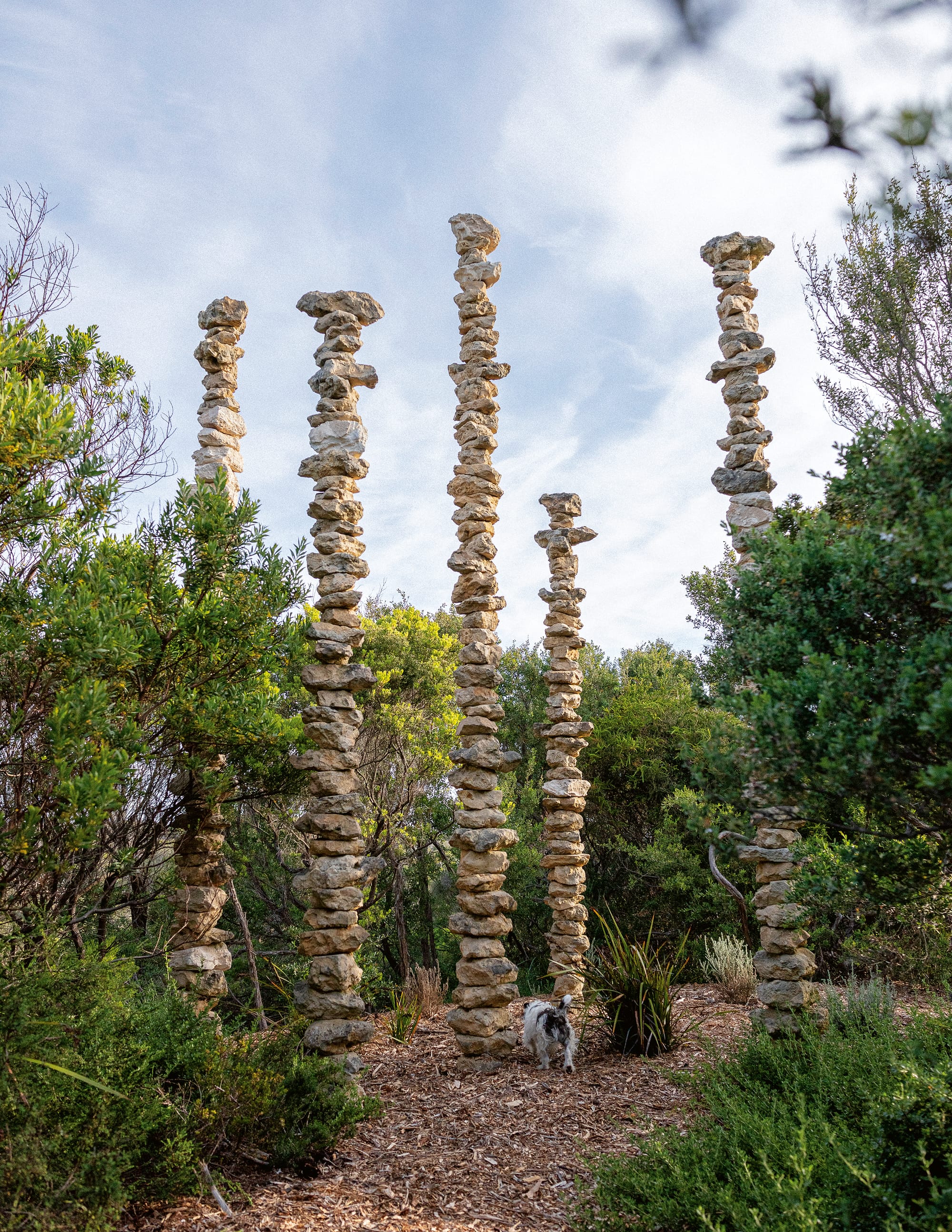
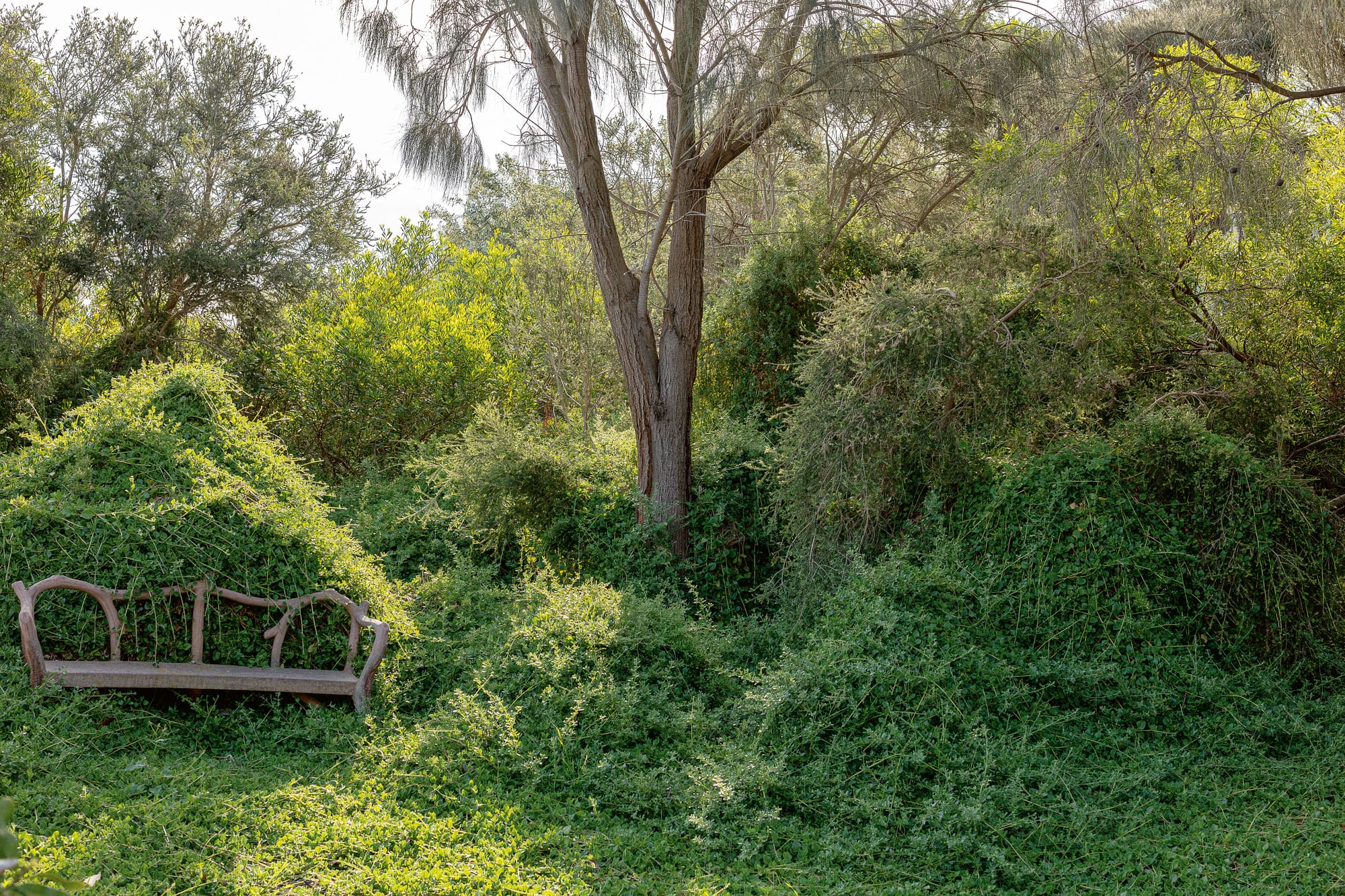
Fiona’s story began with a trip to the UK, part way through her horticulture studies at Burnley College (now a campus of the University of Melbourne). ‘I really loved seeing [English gardens], but I realised they weren’t appropriate for Australia. If we were to move forward here, we really had to go and try new things and be brave about it.’
A dissertation on the restoration of an Edna Walling garden in her final year of study solidified Fiona’s approach. ‘I’d always had an interest in Australian plants, and I began looking at why native gardens hadn’t been successful in the past.’ According to Fiona, it was the plant-and-walk-away approach that was the problem, not the plants themselves. ‘Native plants have to be managed, just like we manage rosemary, roses, camellias.
‘I knew the sort of garden I wanted to have and be able to give other people, and I thought, “Well, I’m just going to experiment.” ’ Her first home garden was on a property near Albury. It evolved in tandem with her work as a designer, focusing on farm gardens, where ‘resources are limited and people go, “Look, we want a beautiful garden but we haven’t got money, we haven’t got water … but we’ve got old bridge timbers, beautiful rock and fantastic old rock walls—what can we do?” ’
Country gardens are truly exercises in practical generosity. Yet resourcefulness and generosity can be radical ideas. ‘Often when I have a garden opening in Melbourne, the Schlumbergera are flowering: they’ve got bright fuchsia-coloured flowers. I probably give out around a hundred cuttings at every garden opening,’ Fiona says. ‘Sometimes when I post a pic of the flower on Instagram, people comment, “My cutting is blooming for the first time. We love the fact that we have a little of your garden in ours.” It’s such a simple gesture, but it can mean so much.’
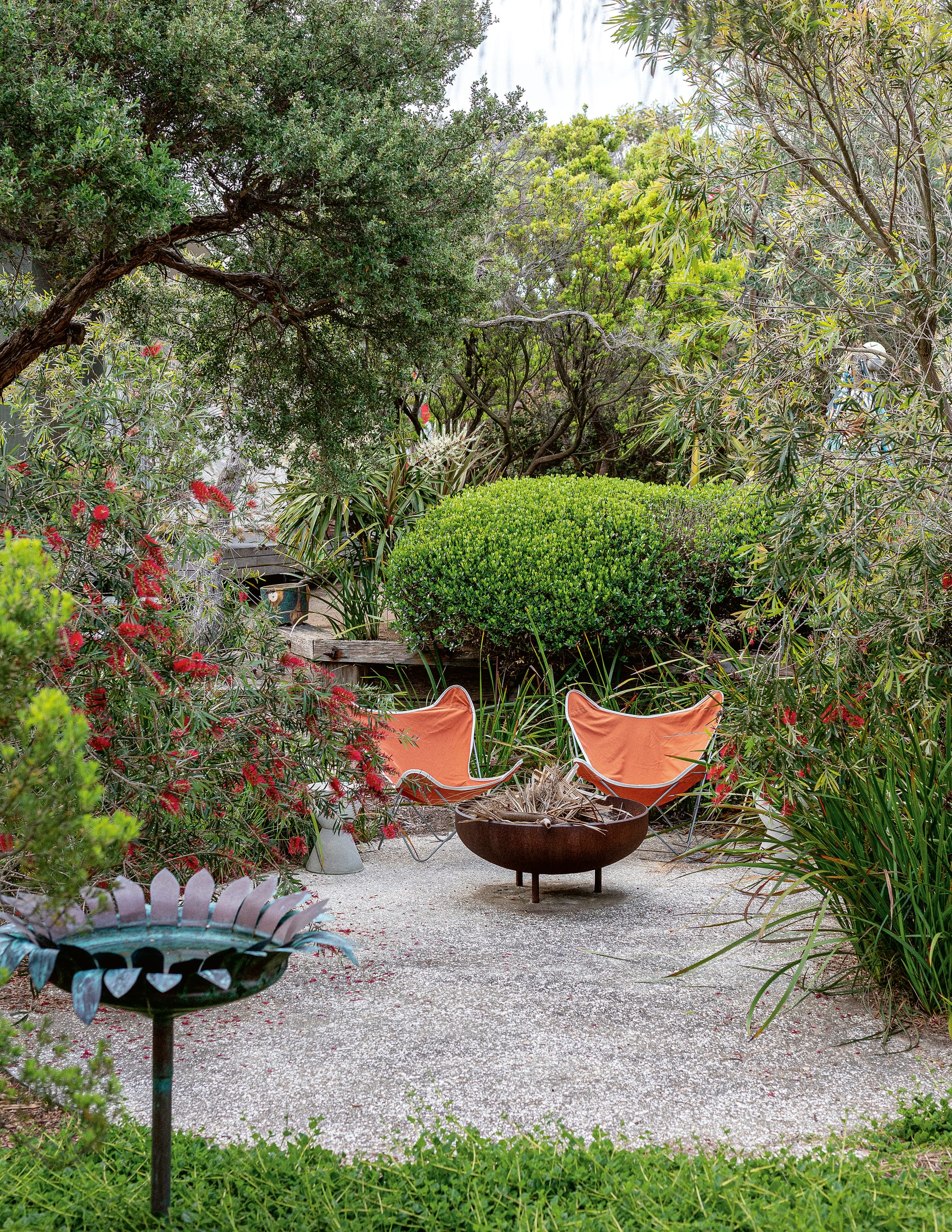
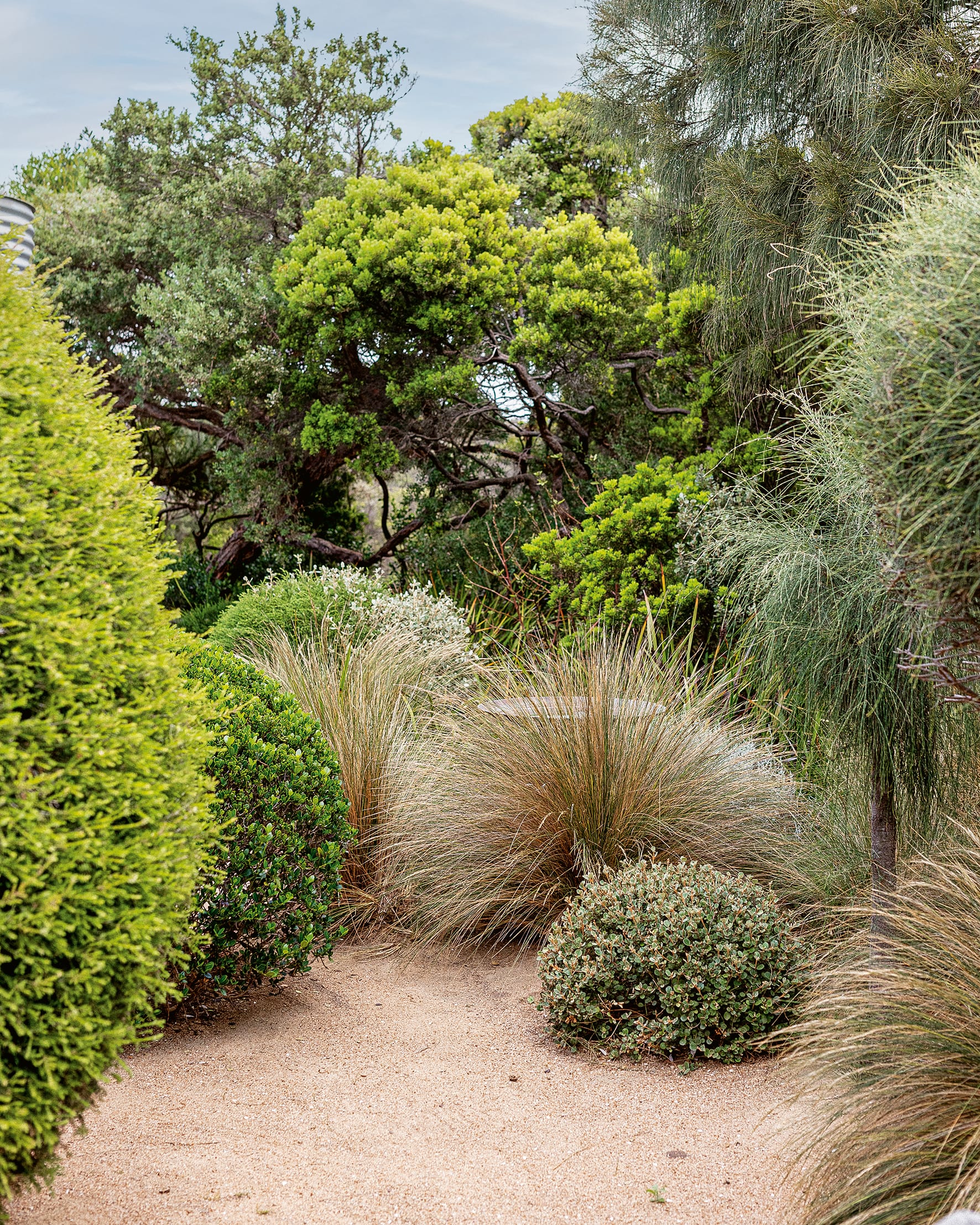
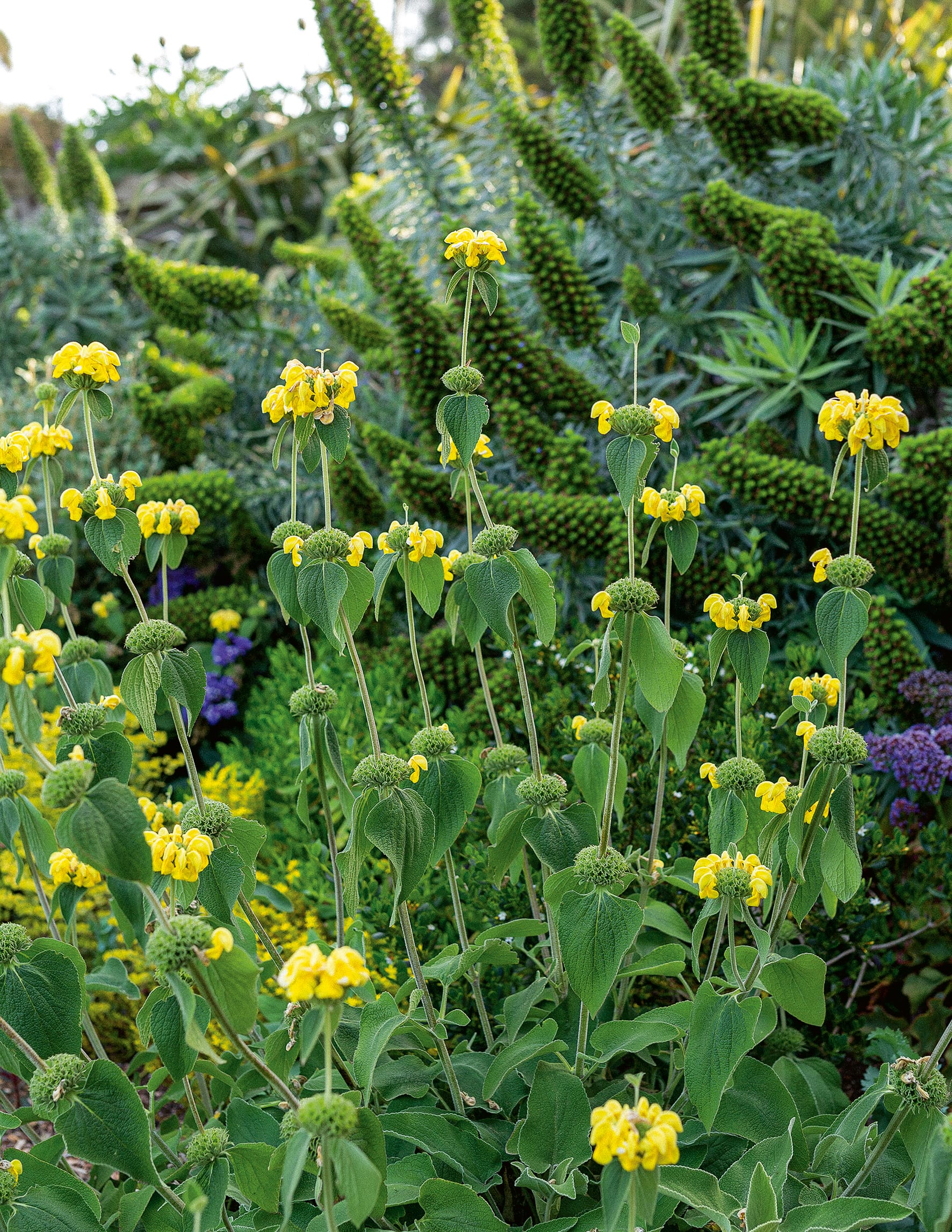
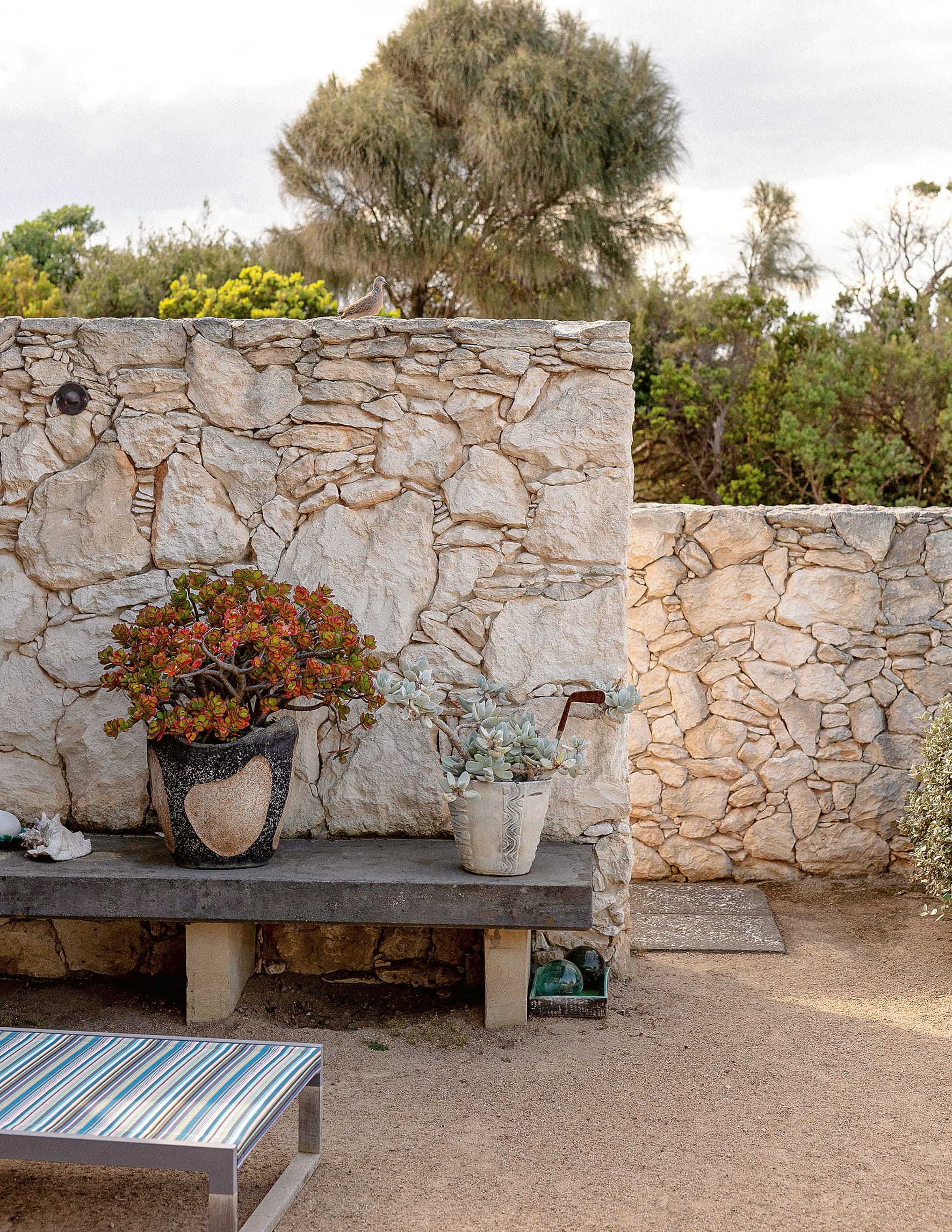

Photography Daniel Shipp.
Fiona’s garden, Karkalla, on Victoria’s Mornington Peninsula, is where her ideas about native Australian plants, resourcefulness and connection to place and community come together. It is a masterpiece: a garden with such a strong sense of genius loci that it could be nowhere else on earth. It began with walking and observing. ‘When I first bought the property, I spent a lot of time walking in the national park, observing what was growing, how plants grew differently in different parts of the park. I took a lot of that visual experience and observation into my garden when I started to think about what I was going to plant and what materials I was going to use.
‘In the national park, there are plants that grow in a solitary manner, not necessarily crowded in with others. I wanted to bring the idea of that into the garden. You can see it in the rear courtyard and front terrace, which are both essentially gravel. Each plant has its own space to display its character.’
Karkalla is a haven for Fiona and her family, and a refuge for the other-than-human beings who live within and move through it. It is about, according to Fiona, working and thinking local. ‘It doesn’t just embed a sense of connection and belonging, it’s actually better for the world if you can use local materials and plants, for wildlife as well as humans. There’s a lot of wildlife in our area that depends on the provision of local plants.’
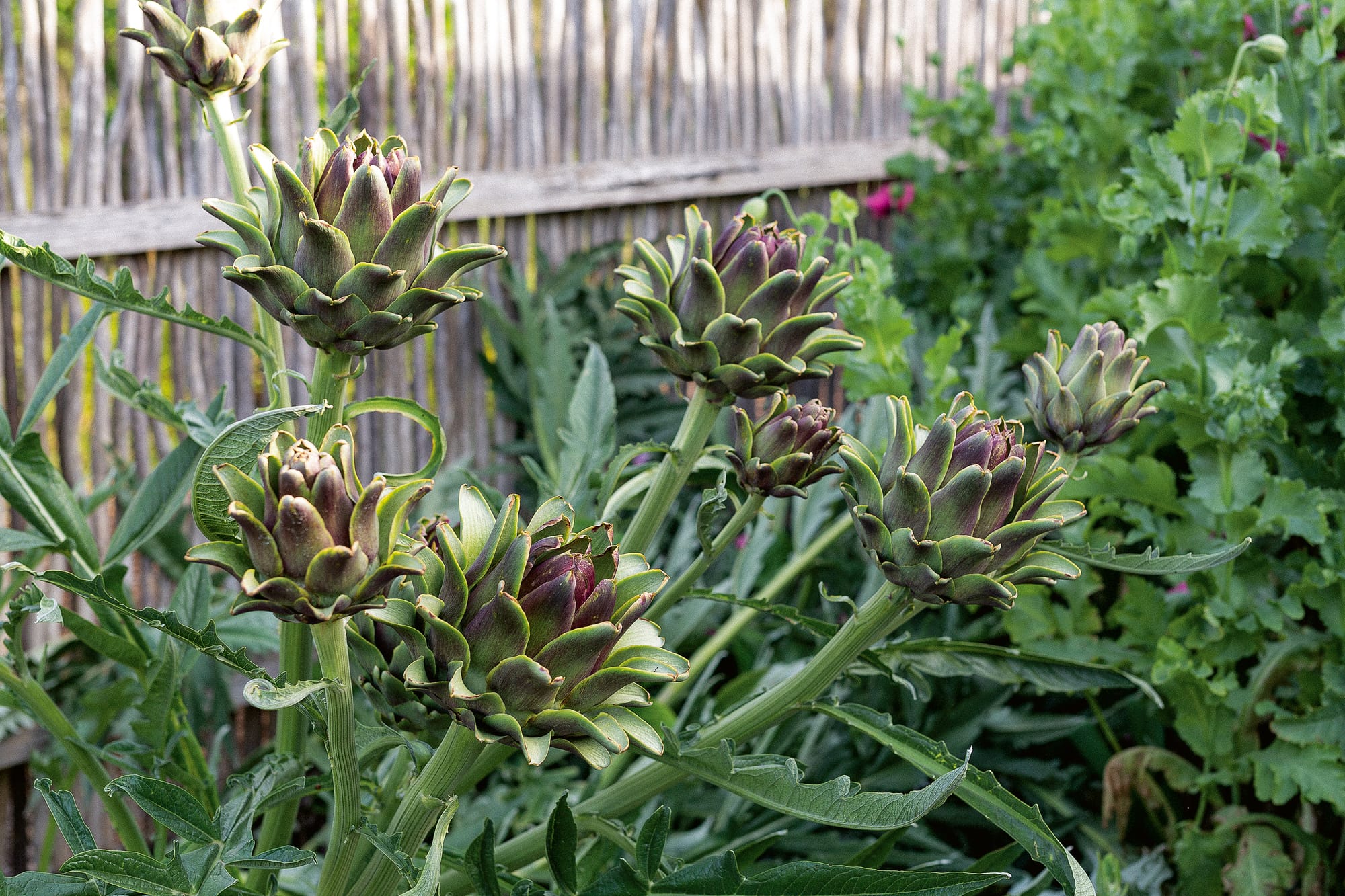

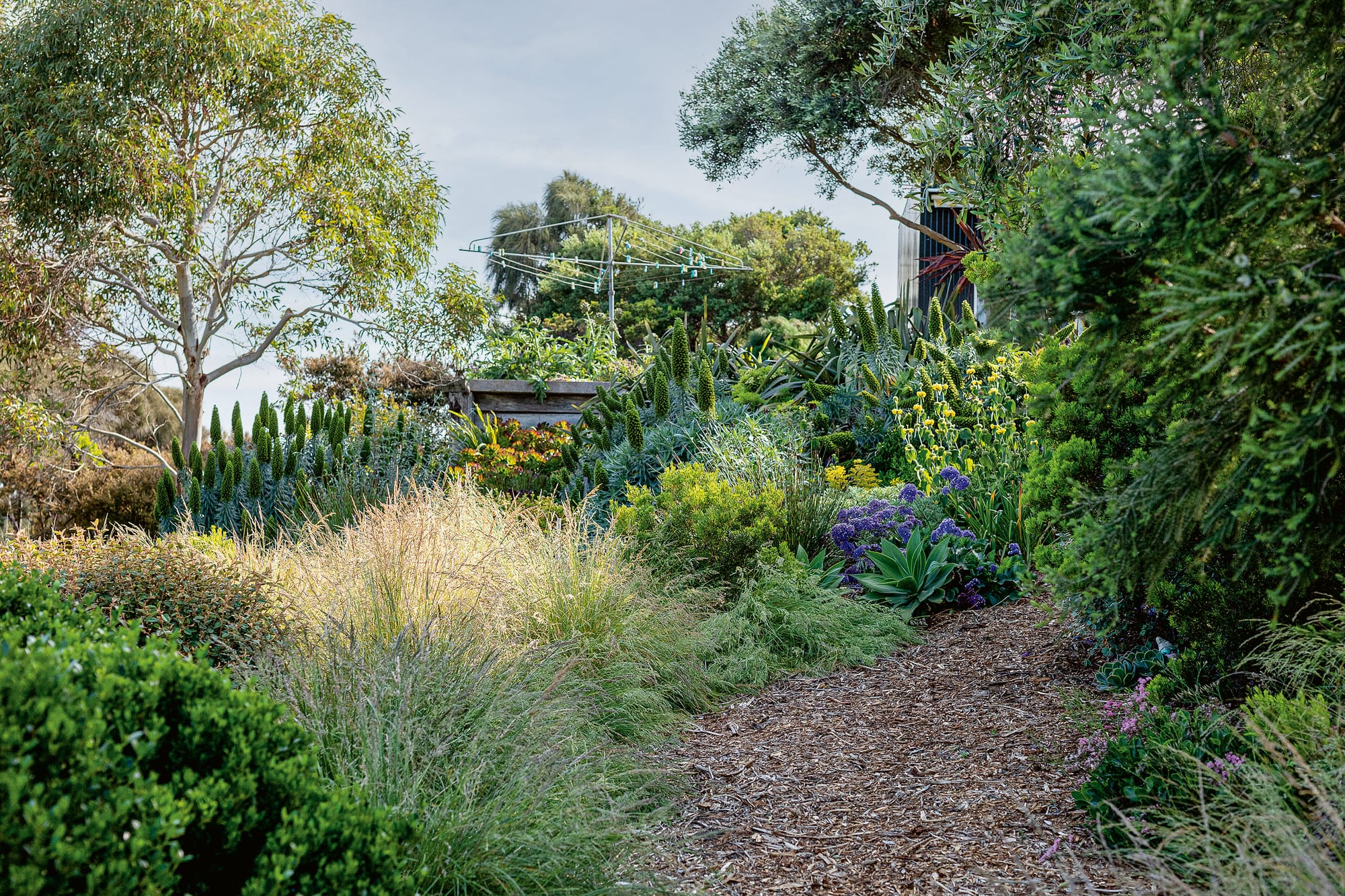
Photography Daniel Shipp.
The importance of the local, and the relevance of garden as a place of connection—to each other and to the natural world—has come into sharp focus as a result of the COVID-19 pandemic. ‘Covid gave us an opportunity to reconnect on many levels,’ Fiona says. She became part of a neighbourhood chat group, created to keep an eye on each other. ‘There was plant swapping and sharing of knowledge. A neighbour would use our woodfired oven to bake bread, then leave a loaf and some seedlings. People always had things at their front gates for swapping. It created a sense of connectedness and community.’
Fiona’s story resonates with my own experience. Throughout my childhood, no extended family get-together was complete until we—typically the women—had taken a walk around the garden. Secateurs were always present, for a snip of this plant or that; snails were crushed unceremoniously by my grandmother; and new plants or particularly well-behaved trees were oohed and aahed over. It was always my favourite part of the day. Because—I see now—it was about connection, beauty and generosity. Three treasures. Perhaps, after all, this is why we make gardens.